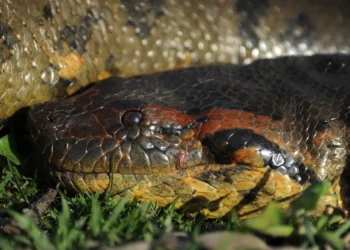In the world of tarantulas, a male’s courtship is often a dangerous affair — especially for the males. His survival can hinge on a swift and successful mating, as an unimpressed or hungry female may decide to turn him into a meal. Now, a team of scientists has described a new genus that uses a striking approach to stay safe: really long reproductive organs.

Satyr King Tarantulas
The new tarantulas were found in the Arabian Peninsula and the Horn of Africa (north-eastern Africa). They were discovered and analyzed years ago, but in the new study, scientists revisited that initial classification. They classed several tarantulas in a new “Satyr King” genus.
“Based on both morphological and molecular data, they are so distinct from their closest relatives that we had to establish an entirely new genus to classify them, and we named it Satyrex,” explains Dr. Alireza Zamani of the University of Turku, who led the study that discovered them.
Satyrex is a fusion of “Satyr,” a figure from Greek mythology and the Latin “rex,” meaning king. Satyrs were half-men-half-goat creatures known for their debauchery (and for having unusually large genitalia).
Male spiders don’t have penises, but they have palps. Palps are a pair of appendages near the mouth that they use to transfer sperm during copulation.
“The males of these spiders have the longest palps among all known tarantulas,” said Dr. Zamani. In fact, their sexual organ size is so striking it’s what was used to separate them in a new genus.
For Satyrex ferox, the palp can be up to 5 cm long, almost four times the length of their carapace (the upper section of a spider’s exoskeleton). For the genus Monocentropus, where these spiders were initially classified, the palp is typically “only” about 1.6 times the length of the carapace.
“The much longer palps of S. longimanus and the four newly described species were among the primary characters that led us to establish a new genus for these spiders, rather than place them in Monocentropus. So yes, at least in tarantula taxonomy, it seems that size really does matter,” Dr. Zamani says.
Why the long palp?

These tarantulas are both defensive and aggressive.
“This species is highly defensive. At the slightest disturbance, it raises its front legs in a threat posture and produces a loud hissing sound by rubbing specialized hairs on the basal segments of the front legs against each other,” Dr. Zamani explains.
This aggression could be what pushed them to develop the long palps. For most tarantulas, mating is a dangerous dance. Males can be injured or even killed and cannibalized during the process. So, tarantula males often develop a specialized hook on their first pair of legs. They use this to grasp the female’s fangs during copulation, as they mate face-to-face. This allows the male to safely position himself underneath the female to transfer sperm. However, the species in the new genus seems to have a different approach.
By using his long palps, the male can maintain a greater distance from the female’s fangs, positioning himself slightly away from her rather than directly beneath her. This seems to make a lot of sense given how aggressive the species are.
“We have tentatively suggested that the long palps might allow the male to keep a safer distance during mating and help him avoid being attacked and devoured by the highly aggressive female,” Zamani mentions.
The life of the tarantula is not easy, especially if you’re a male. But as these species show, you can develop strategies that give you an evolutionary edge. Sometimes, this strategy is just having bigger sex organs.
Journal Reference: Zamani A, von Wirth V, Fabiánek P, Höfling J, Just P, Korba J, Petzold A, Stockmann M, Elmi HSA, Vences M, Opatova V (2025) Size matters: a new genus of tarantula with the longest male palps, and an integrative revision of Monocentropus Pocock, 1897 (Araneae, Theraphosidae, Eumenophorinae). ZooKeys 1247: 89-126. https://doi.org/10.3897/zookeys.1247.162886






